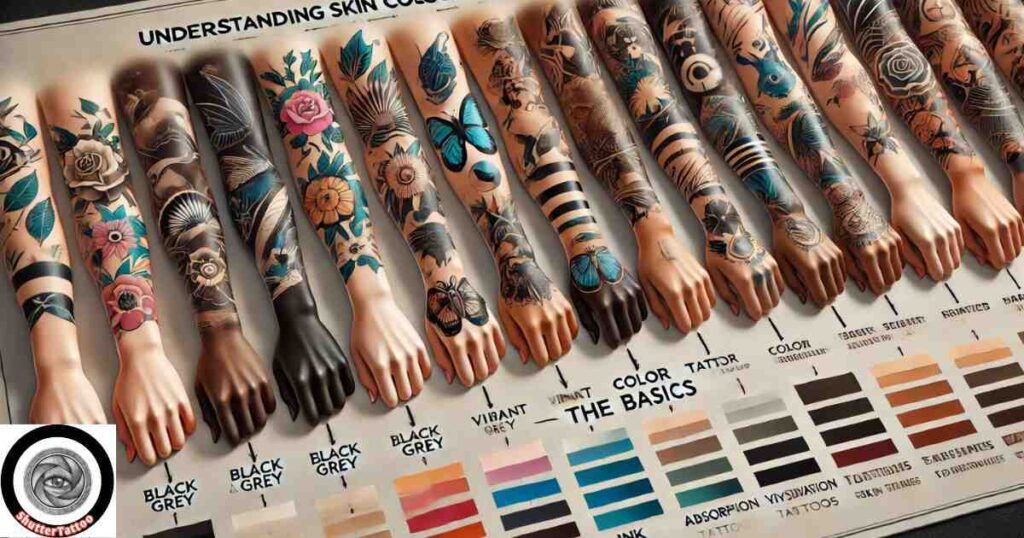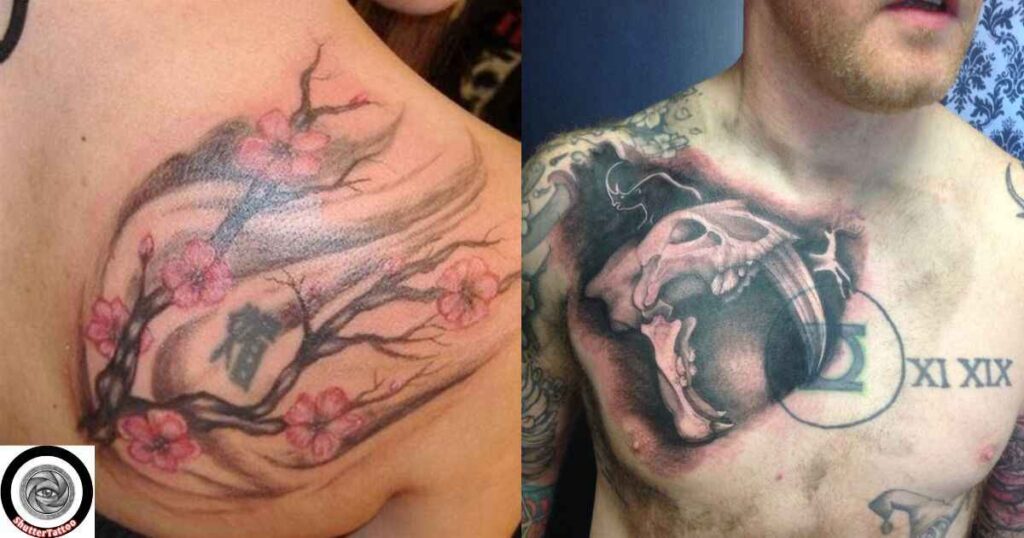Curious about skin color tattoos? These innovative tattoos use pigments that match your natural skin tone to conceal imperfections like scars or stretch marks. By blending seamlessly with your complexion, they offer a subtle way to enhance your skin’s appearance. But how do they work, and are they right for you? In this comprehensive guide, we’ll explore everything you need to know about skin color tattoos, from the procedure and benefits to considerations and aftercare. Whether you’re looking to camouflage a scar or even out skin pigmentation, understanding this technique can help you make an informed decision.
Imagine transforming a noticeable scar into a nearly invisible part of your skin. With skin color tattoos, this is possible. By carefully matching the tattoo pigment to your skin tone, skilled artists can create a natural look that boosts confidence and comfort in your own skin. Ready to discover how this process can work for you? Let’s dive into the details and uncover the art and science behind skin color tattoos.
Understanding Skin Color Tattoos: The Basics

What is a Skin Color Tattoo?
A skin color tattoo is a specialized tattooing technique that uses flesh-colored ink to blend with a person’s natural skin tone. This process is commonly used to camouflage scars, stretch marks, and other skin imperfections. Unlike traditional tattoos, which are designed for artistic expression, skin color tattoo basics focus on restoring a natural appearance. The pigments are carefully selected to match individual skin tones, creating a seamless look that enhances confidence.
The Science Behind Skin Color Tattoos
The effectiveness of skin tone matching in tattoos depends on the interaction between tattoo pigments and the skin’s layers. The ink is deposited into the dermis, where it remains visible through the translucent epidermis. Skilled practitioners use advanced techniques to ensure the color blends well, avoiding unnatural hues. The healing process further influences the final result, as the skin adjusts and absorbs the pigment, gradually revealing a more even complexion.
History and Evolution of Skin Color Tattoos
The concept of skin color tattoo history dates back to early medical tattooing practices used for reconstructive purposes. Over the years, advancements in tattoo evolution have led to improved pigment formulations and application techniques. In the early 2000s, medical tattooing gained popularity for scar camouflage, particularly among burn survivors and individuals with vitiligo. Today, modern techniques allow for more precise color blending, ensuring better and more natural-looking results.
Scar Camouflage: The Primary Application
How Scar Camouflage Works
A scar camouflage tattoo works by implanting skin tone camouflage pigments into the scar tissue, making it blend with the surrounding skin. This method is particularly effective for post-surgical scars, burn marks, and stretch marks. The process involves multiple layers of pigment application, ensuring an even and natural appearance. However, not all scars are suitable for tattooing—factors like scar age, texture, and skin type determine the success rate of the procedure.
The Pointillism Technique
One of the most effective methods for achieving a natural look is the skin color tattoo technique known as pointillism. This technique involves depositing tiny dots of pigment into the skin rather than using solid strokes. By carefully layering different shades, artists can create a more natural transition between the treated area and the surrounding skin. This method mimics the natural variation in skin tone, making the tattoo less noticeable.
Healing and Results Timeline
The skin-colored tattoo healing process varies depending on individual skin type and aftercare. Initially, the treated area may appear slightly darker than the surrounding skin, but as healing progresses, the color softens. The typical healing timeline is:
| Stage | Duration | Key Changes |
| Initial Healing | 7-10 days | Skin may appear red and slightly swollen |
| Color Settling | 3-6 weeks | Pigment begins to blend naturally |
| Final Results | 3-6 months | True color becomes fully visible |
Following aftercare instructions, such as keeping the area moisturized and avoiding direct sun exposure, is crucial for optimal results. Touch-ups may be required after a few months to ensure perfect color matching and longevity.
Applications and Limitations
Types of Scars That Can Be Covered
A scar coverage tattoo is ideal for concealing various types of scars, including surgical scars, burn scars, stretch marks, and acne scars. However, the success of the procedure depends on the scar’s age, depth, and texture. Fresh scars or those with irregular surfaces may not retain pigment evenly, making it essential to consult an expert before proceeding.
Vitiligo and Skin Color Tattoos
Vitiligo tattoo coverage is an option for individuals with stable vitiligo patches. However, results vary due to differences in pigment absorption and potential future changes in skin tone. Since vitiligo can cause depigmentation over time, tattooing may require periodic touch-ups to maintain color consistency. Patients should consult a specialist to assess their suitability for the procedure.
Covering Old Tattoos

A tattoo cover-up using skin tone cover-up pigments can work for faded tattoos but has limitations. Since tattoo ink is often darker and more concentrated than skin-tone pigments, complete coverage may not always be possible. Laser tattoo removal may be required before applying a skin color tattoo for optimal blending.
The Treatment Process
Consultation and Assessment
A skin color tattoo consultation involves evaluating the skin’s condition, the area requiring treatment, and color matching. A trained professional assesses the scar type, pigment retention capability, and any medical history that might affect results. A patch test may also be conducted to ensure pigment compatibility before the procedure.
The Procedure Step by Step
A skin-colored tattoo procedure follows these key steps:
- Skin Preparation – Cleaning and numbing the area.
- Color Matching – Selecting a pigment that best matches the skin tone.
- Tattooing – Implanting pigment using fine needles with pointillism or layering techniques.
- Initial Healing – The treated area undergoes minor swelling and color adjustment over a few weeks.
- Final Results – After full healing, the color blends naturally with surrounding skin.
Aftercare and Maintenance
Proper skin color tattoo maintenance is crucial for long-lasting results. Patients should keep the area moisturized, avoid sun exposure, and refrain from scratching during the healing phase. Regular touch-ups may be needed every few years to maintain color consistency, especially for individuals with significant skin tone changes over time.
Comparing Treatment Options
Laser Treatment vs. Skin Color Tattoos
A scar treatment comparison between laser therapy and skin color tattoos highlights different benefits. Laser treatments focus on reducing scar tissue and improving skin texture, while tattoos provide immediate pigmentation correction. Costs vary, with laser treatments requiring multiple sessions, whereas tattooing offers a more permanent solution in fewer sittings.
Permanent Makeup Applications
Permanent makeup scar coverage is another alternative that differs from skin color tattoos. While permanent makeup is mainly used for enhancing facial features like eyebrows and lips, it can also be applied to minor scars. However, the pigment depth and formulation are different, making it less effective for larger scars compared to skin color tattooing.
Traditional Cosmetic Coverage
Temporary scar coverage options include makeup products such as concealers and foundation. While effective for short-term use, they require daily application and may not withstand water, sweat, or friction. In contrast, skin color tattoos provide a long-term solution, reducing the need for constant reapplication while delivering natural-looking results.
Effectiveness and Results
Success Factors
The success of skin color tattoo results hinges on several elements. Accurate color matching to the individual’s skin tone is crucial for a natural appearance. The tattoo artist’s expertise and experience play a significant role in achieving seamless blending. Additionally, the type and condition of the scar or skin imperfection can influence the outcome. Proper aftercare following the procedure is essential to ensure optimal healing and pigment retention.
Expected Longevity
The durability of skin-colored tattoos varies based on factors such as skin type, sun exposure, and the quality of the pigments used. On average, these tattoos can last several years before requiring touch-ups. Exposure to sunlight can accelerate fading, so protecting the tattooed area from UV rays is advisable. Aging skin may also affect the appearance of the tattoo over time, potentially necessitating maintenance sessions.
Common Challenges and Solutions
Common challenges in skin color tattoos include pigment mismatch, uneven healing, and changes in skin tone over time. To address these issues, selecting a skilled tattoo artist with experience in skin tone matching is vital. Adhering to recommended aftercare practices, such as keeping the area moisturized and avoiding direct sunlight, can promote even healing. Regular assessments with the tattoo artist can help identify and correct any fading or discoloration, ensuring the tattoo remains natural-looking.
Read This Blog: Tummy Tuck Scar Tattoo: The Ultimate Guide
Choosing a Provider
Qualifications to Look For
When selecting a skin color tattoo artist, it’s important to consider their credentials and experience. Look for professionals who have completed specialized training in cosmetic or paramedical tattooing. Reviewing their portfolio can provide insight into their proficiency with skin tone matching and scar camouflage. Additionally, seeking client testimonials or reviews can offer perspective on their reputation and the quality of their work.
Safety and Sanitation Standards
Adherence to strict tattoo safety standards is essential to prevent infections and ensure a safe procedure. The tattoo studio should maintain a clean and sterile environment, utilizing disposable needles and equipment. The artist should follow proper hygiene practices, including wearing gloves and sanitizing work surfaces. It’s also beneficial if the artist has completed courses in infection control or bloodborne pathogens.
Also Read This Blog: Simple Leg Tattoos for Guys: The Ultimate Guide (2025)
Cost Considerations
Price Factors
The skin color tattoo cost is influenced by several factors, including the size and complexity of the area to be treated, the artist’s experience and reputation, and the geographic location of the studio. Larger or more intricate areas may require multiple sessions, increasing the overall cost. It’s important to discuss pricing upfront and understand what is included in the quoted price.
Insurance and Financing
Typically, scar camouflage procedures are considered cosmetic and are not covered by insurance. However, some studios may offer financing options or payment plans to make the treatment more affordable. It’s advisable to inquire about available payment options during your consultation and assess whether the studio provides any financial assistance or flexible payment structures.
By thoroughly understanding these aspects, you can make informed decisions and achieve the best possible outcome with your skin color tattoo.
FAQ
What is your experience with skin color tattoos and scar camouflage?
I have specialized in skin color tattoos and scar camouflage for over five years, treating various scar types.
Can I see before-and-after photos of similar procedures you’ve performed?
Certainly, here are before-and-after photos of clients with similar treatments.
What pigments do you use, and how do you ensure a color matches my skin tone?
I use high-quality, hypoallergenic pigments and custom blend them to match your unique skin tone.
What does the aftercare process involve, and what should I expect during healing?
Aftercare includes keeping the area clean, applying recommended ointments, and avoiding sun exposure during healing.
How many sessions will be required, and what are the costs associated?
Typically, 1-3 sessions are needed; costs vary based on the scar’s size and complexity.
Conclusion:
Skin color tattoos offer an effective solution for concealing scars and skin imperfections. By selecting a qualified artist and following proper aftercare, you can achieve natural-looking results that boost your confidence. Consult with a professional to explore how this innovative technique can meet your needs.

